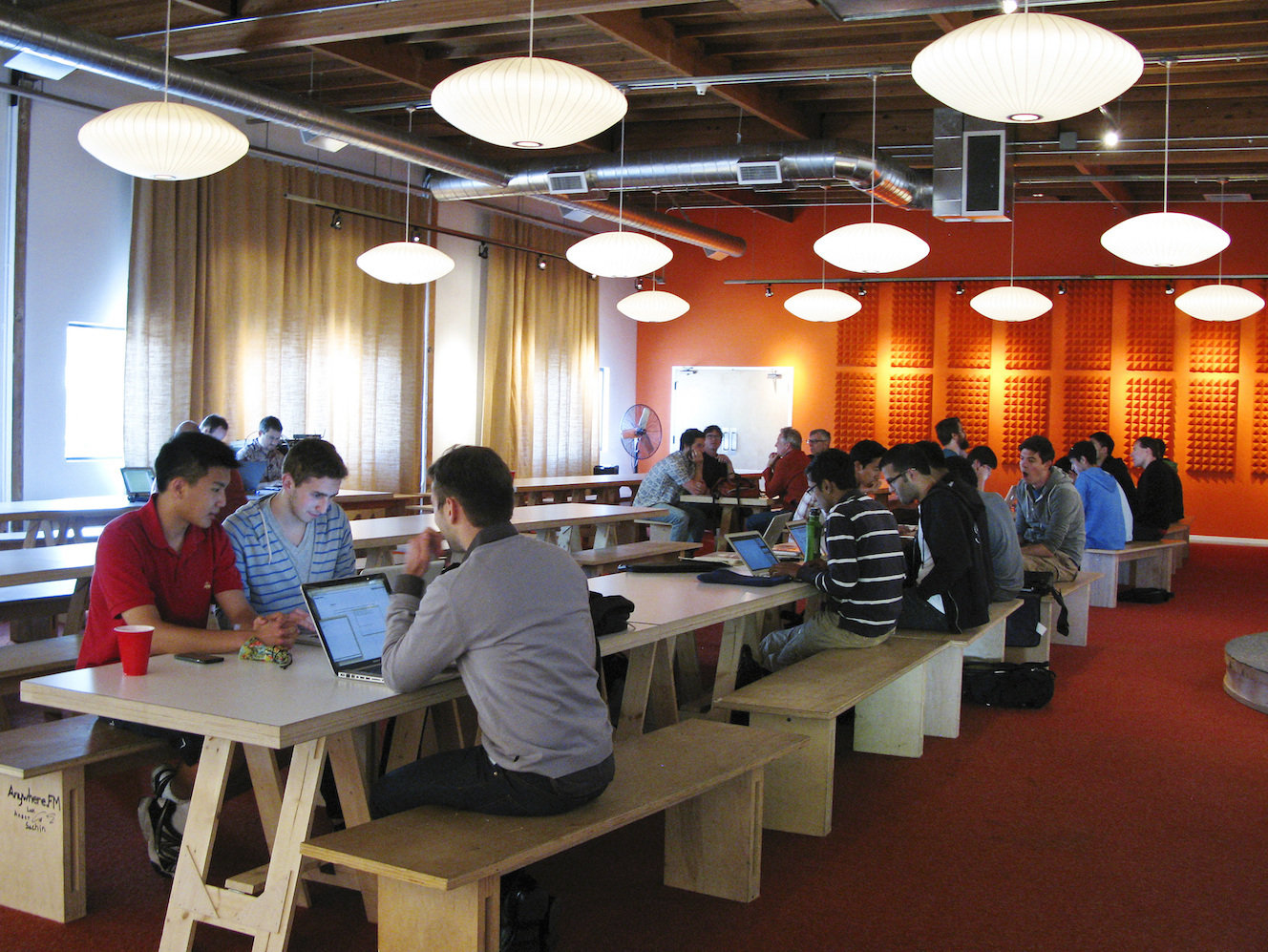Series A: How to prepare for large investments

We have already talked about what the founders can do to avoid being trapped while working on attracting the first round of investment. A fresh look at investment and a sober assessment of one’s capabilities are essential elements of success.
Another trend that can be noted is a greater amount of investment that start-ups are trying to get. It is clear that the market is not able to adapt to such conditions. Nevertheless, we see how companies continue to attract investments in the amount of 15-20 million dollars in the first round, only a few months after receiving the seed investments. To invest 15 million dollars, the investor must be confident “3 times stronger” than with an investment of 5 million.
')
The desire to raise more than 15 million dollars in round A arises for several reasons. The founders usually look at the data and believe that new standards have been introduced. For example, some founder sees that his friend has received a large sum, reads about large-scale rounds and thinks that his company can also. This, of course, is possible, but it rarely happens.
In addition, I often hear investors in the later stages of financing give bad advice to founders in the early stages. Suppose the founder holds a meeting with investors on the Sand Hill Road and mentions investing in a fairly large amount. If the investor is not surprised, the founder begins to think that it is quite real, even when in fact it is not.
Simple advice: it is easier to increase the size of investments at the stage of the first round, than to reduce.
The most successful founders of those that I have met, wait, before attracting investment. They are waiting to demonstrate their achievements and provide evidence of the development of their company, and then they ask for a small amount.
You do not want to get into a situation when you call the venture capital company and say: “Listen, I remember that a month ago I asked for 15 million dollars, but after talking with some people I decided to ask for 6 million”. Any investor will understand what this means, and will begin to doubt you and your company. It is much easier to call and say: "I asked from 6 to 8 million, but it seems that we can attract 12 million, given the high interest of the investor."
I do not recall all the stories that I was told about the unsuccessful fundraising, when the founders began to attract investments too early and in too large volumes. This is a kind of phenomenon in this area, but the founders began to think differently just now.

So what do the founders do in the end?
The good news is that companies can avoid such problems. There are many opportunities to take advantage of the current trend and use it to its advantage.
For example, some far-sighted founders with whom I work benefit from a sharp increase in seed financing and attract large sums at an early stage, gaining more time to do more and achieve the highest possible results. If you are a very promising newcomer, try to get as much investment as possible in principle.
When you attract seed investments, everyone looks at the attractiveness of your idea. As I like to say, nothing helps to make a beautiful story, except numbers. This is exactly what happens during the first round.
You immediately begin to be judged by your data, which you had to collect all this time to demonstrate your success, growth and potential. So why not attract 2.5 million seed investments instead of 1.5 million and give yourself a chance to maximize your performance? You should expect to be 18-24 months after the sowing round. It is best to attract subsequent capital when you do not need it, and 2 extra years in reserve - the best option in this situation.
Another advantage when raising sowing investments in the current environment is a large choice of investors to whom you can turn. There is an opportunity to carefully approach the choice of a suitable investor.
My advice: Do your research and see which companies and individuals already have successful startups, which they have assiduously helped. Despite the fact that there are superangles that provide invaluable support, you can come across those who are not really “super” and far from “angel”.
Instead of arranging an “entertaining round” with venture company logos, it seems to me that it would be better if the founders choose investors who will roll out their sleeves and provide the necessary conditions, introduce you to the right people, help you find and recruit talented specialists round A and support you to achieve your goals. And make sure your investor is willing to truly work with you. A company issuing checks of 250 thousand and 25 million each will not be able to offer the same services and support.
Once you got your money, you need to stop and sort it all out. It always amazes me when a start-up team cannot clearly allocate its expenses. It is always necessary to be clear about what achievements and indicators you will show investors in Round A. And all this data should reflect a significant increase in market value and risk reduction.

Spending a million dollars is much easier than you think.
Reducing monthly costs before a product meets market conditions will give you a better chance of creating a large company. So, many companies say: “Well, we have enough money for 12 months. Let's launch the product in 11 months. ” This is a bad option.
If it takes you 11 months to create a product, even if you think that you will start delivering it on time (which happens rarely), you will be left with nothing else before you know what it is to collect market data. Nothing will increase your chances of success in the first round more than launching a product that the consumer really likes.
A successful launch can be determined after a few months. Suppose your company works in the field of e-commerce, and you understand that the Christmas holidays will bring you 40% of your current income. You do not want to get into a situation where you have to look for investments in November. You must make sure that you have enough money in your hands in order to seek funding in February after the completion of the intermediate stage.
Such turning points change from year to year, so find out what money is being invested in. For example, a year ago in the world of computer technology, one million dollars in pre-sales on Kickstarter with a great product idea was enough to get an investment in the first round. Today, investors require millions of dollars in presales with a product that either works or is already at the production stage, given the risk of supplying equipment to the market.
With regard to the timing, it should be remembered that the successful attraction of funds takes from 4 to 8 weeks. We add time for preparation and negotiations and as a result we get several months. Consider this when making a schedule and choosing the achievements that you will talk about. Just in case it is worth giving yourself more time.
In addition, it should be remembered that tracking data is not enough. Your speech must be prepared and rehearsed better than you might think. Despite the fact that this is not the most interesting activity, and it can be easily avoided, your speech at investment attraction can decide your whole fate. I met the founders who spent more time preparing the weekly payroll than preparing my presentation. You need to consider your negotiations in the literal sense of the most important part throughout the process.
Founders must understand indicators.
We recommend preparing to attract the first round of investment for at least 4 weeks. It even went so far as to form a team of First Round employees called “Negotiation Assistance,” and it helps the founders build a compelling story to collect the funds they need.
It all sounds as if you urgently need to start limiting your budget. But it is not necessary to go to such an extreme. You should not limit yourself when you need to work and develop very quickly. If you attract more seed investments and regularly monitor your progress in relation to the required indicators, you will find yourself in an advantageous position.
Receive the necessary feedback from your assistants and other businessmen concerning that metrics which, in their opinion, you will need to be shown. You should give preference to recommendations from those who worked in a similar sector or who are well acquainted with your business model. If you are using the SaaS model, contact professionals and investors familiar with this area. They must understand the specific market indicators that interest potential investors.
In certain business models, you can increase capitalization by dynamically increasing the number of customers instead of using a specific monetization strategy. Development in all directions makes no sense when it is necessary to convince investors.
Talk to other entrepreneurs who have already negotiated with them, or investors familiar with them, to find out what they usually ask and what they expect. Companies differ sharply in what they want to see in entrepreneurs. The more you know, the easier you will be able to adapt your strategy for each of the meetings.
Failure is not the worst thing that can happen to you. As Walt Disney once remarked: “All the troubles that have fallen to my lot, all the failures and obstacles have only made me stronger ... You may not feel this when it happens, even spitting in your face may turn out to be the best that ever happened to you either happened.
Starting your company is not easy. It is very hard to create a cool product, hire talented specialists and raise capital. Do not let the wave of seed investments mislead you that subsequent funding will not require any effort.
PS You can start preparing for attracting investments using the presentation template prepared by the FRII experts [ Slideshare , Keynote , PPT ]:
Source: https://habr.com/ru/post/293144/
All Articles